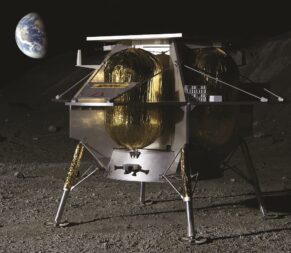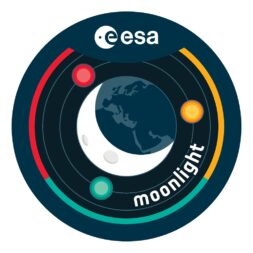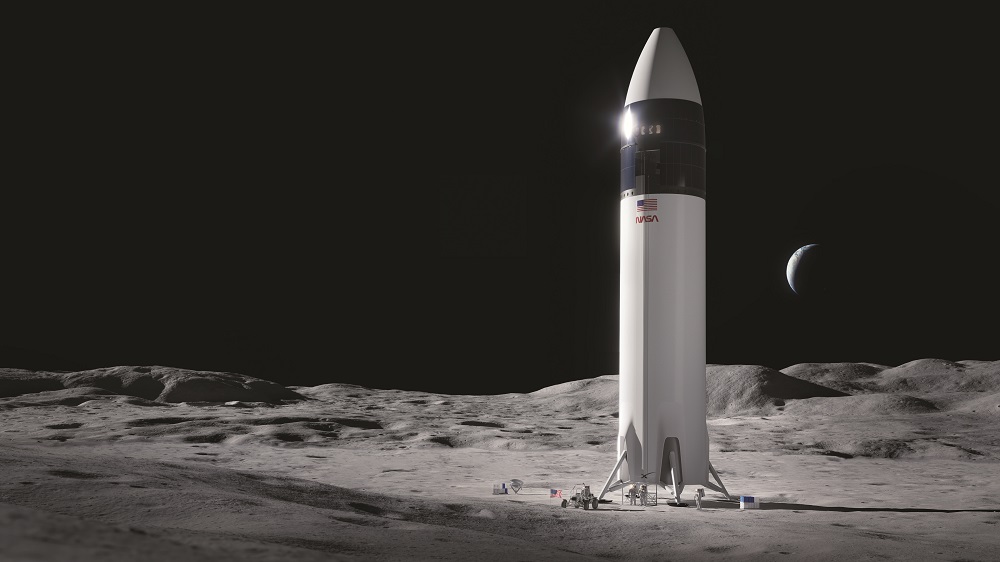Products You May Like
NASA’s Human Landing System (HLS) program is the biggest bet the agency has made on the commercial space industry since the commercial crew program a decade ago. NASA decided to procure landing services rather than the landers themselves, awarding a $2.9 billion contract to SpaceX April 16 to fund development of a lunar lander based on the company’s Starship vehicle and fly one demonstration mission with astronauts.
That approach has attracted plenty of scrutiny and criticism. The award to SpaceX is on hold as the Government Accountability Office evaluates protests filed by two losing bidders, Blue Origin and Dynetics. A bill passed by the Senate June 8 would require NASA to select a second company, although with no guarantee that the funding will be there to support both companies.
HLS may be the biggest example of NASA buying services to support the Artemis program, but it is not the only one. Even as some cornerstones of Artemis — Orion, the Space Launch System and the Gateway — move forward under conventional contracts where NASA owns and operates the hardware, it’s making greater use of service contracts to acquire the other things it needs to explore the moon, from landers and communications to even the spacesuits the astronauts will wear on their moonwalks.
CLPS AS A SERVICES PATHFINDER
HLS is not NASA’s first lunar lander services program. In 2018, NASA unveiled the Commercial Lunar Payload Services (CLPS) program, where the agency would buy payload space on commercially developed robotic lunar landers.
The idea was to provide frequent and inexpensive access to the moon for experiments and technology demonstrations, particularly those with a higher tolerance of risk. Agency officials often talked about taking “shots on goal” with CLPS, with the expectation that not every shot would make it in.
Fourteen companies have received NASA contracts through CLPS, making them eligible to bid on task orders for delivery missions. Four companies have won the six task orders NASA has issued to date: Astrobotic and Intuitive Machines each won two, along with Firefly Aerospace and Masten Space Systems. Their missions range from transporting scientific instruments that had been sitting on the shelf waiting for a ride to VIPER, a NASA rover the size of a golf cart that will search for ice deposits at the lunar south pole.

CLPS is also a pathfinder for buying services for lunar exploration. “The big thing here is that we’re starting to work more closely with the commercial community,” said Jake Bleacher, chief exploration scientist at NASA. “CLPS is our first step on that front.”
That has become a learning experience for both NASA and the companies as they get used to different ways of doing business. Some scientists who have experiments flying on CLPS missions have privately complained that NASA’s approach of buying payload space on commercial landers shifts the technical burden, and costs, onto researchers. They now have to come up with their own solutions to engineering issues like thermal control that would, in a traditional approach, be handled in a more integrated fashion.
A services approach also doesn’t prevent delays. When NASA made the first CLPS awards in May 2019, the three winners — Astrobotic, Intuitive Machines and Orbit Beyond — promised to launch their missions by the middle of 2021. But Orbit Beyond, whose lander was going to be the first to launch in September 2020, returned its award two months later because of what NASA called “internal corporate challenges.”
Intuitive Machines saw its first Nova-C lander mission slip slightly from July to October 2021. However, in a Federal Communication Commission license application filed in April, the company revealed its launch had been delayed to no earlier than the first quarter of 2022. The company blamed the delay on its launch provider, SpaceX, who said that “unique mission requirements” forced the delay.
Astrobotic, which originally was going to launch its Peregrine lander in June 2021, is still hoping to launch before the end of the year. It will fly on the inaugural Vulcan Centaur rocket from United Launch Alliance, whose development has been delayed by issues with its BE-4 main engine. ULA has suggested that customer payload delays, and not Vulcan issues, would delay its first launch with the Peregrine lander into 2022.
John Thornton, chief executive of Astrobotic, said at a June 9 event that the Peregrine launch is coming “very soon” but wasn’t more specific.
LUNANET AND MOONLIGHT
There have been proposals to expand the CLPS program to include orbiters or even sample return missions. However, the next frontier for commercial services at the moon may involve infrastructure.
NASA is studying a concept it calls LunaNet: a network of satellites that would relay communications and provide navigation information for spacecraft on or around the moon. Current and proposed missions can communicate directly to Earth, but increasing lunar traffic will strain existing ground networks, and won’t work for missions on the lunar farside, where Earth is out of view.
“Our philosophy is that each mission should not have to create its own communications and navigation infrastructure. That’s not efficient,” said Andy Petro, lunar communications and navigation implementation lead at NASA Headquarters. “We see having an infrastructure to provide those services lowers the barrier to entry for new missions and capabilities.”
Exactly what LunaNet will look like is unclear, as the project is still in its earliest phases of development. “The idea of having relays this early was not anticipated,” he said at a meeting of a Space Studies Board committee in April. Interest in doing missions on the far side of the moon, as well as exploration of the polar regions where direct-to-Earth communications can be difficult, accelerated planning for a communications network.
However, it’s unlikely that LunaNet would be a conventional NASA program. “We’re looking at doing something that NASA would not necessarily build and operate, but through either commercial public private partnerships or service contract arrangements, quite possibly from multiple providers,” he said.
In a request for information (RFI) last October, NASA asked for details from potential commercial service providers for lunar communications and navigation. That included not just technical capabilities but also cost estimates and the “potential for partnerships and options for financing” the system.
Petro said at the April meeting that NASA is still working on an acquisition strategy for LunaNet. “I don’t expect it to be the traditional development and procurement that we’ve done in other cases.”

NASA is not the only agency looking at commercial approaches to lunar communications and navigation. On May 20, the European Space Agency announced it issued study contracts to two consortia, one led by Surrey Satellite Technology Ltd. (SSTL) and the other by Telespazio, for an initiative called Moonlight. The two groups will spend the next 12 to 18 months studying concepts for satellite networks around the moon for communications and navigation.
“Moonlight could be a flagship European project to create the first operational comms and navigation system around the moon,” David Parker, ESA’s director of human and robotic exploration, said at a briefing about the contracts.
The goal, he emphasized, is to create a commercial system, one developed in partnership with ESA but offering services to others. That will be part of the initial Moonlight studies: “the feasibility of the system but also the business case,” Parker said. The studies will be done in time for ESA to decide whether to seek support for the program at its next ministerial meeting in late 2022.
SSTL has a head start. It is developing a spacecraft called Lunar Pathfinder scheduled for launch in 2024 that will provide commercial communications relay services. It will operate in an elliptical orbit providing coverage over the south polar regions of the moon, using UHF and S-band links with spacecraft on the lunar surface and X-band for communications with Earth.
“We’re creating this shared communications and navigation network for the moon that we believe will undoubtedly act as a catalyst to inspire more exploration missions,” said Phil Brownett, managing director of SSTL.
ESA officials said NASA was aware of Moonlight but added that having multiple networks of communications and navigation satellites at the moon could have benefits provided there was some degree of interoperability, like that between the GPS and Galileo satellite navigation systems.
Petro said NASA also supported interoperability. “We’re promoting this idea of mutually agreed-upon standards among a set of cooperating networks,” he said, which could go beyond communications and navigation to other services, like solar storm warnings. “We think this could be introduced as part of the earliest missions.”

RENT THE (LUNAR) RUNWAY
NASA is also examining how it can use services, rather than conventional contracts, for the spacesuits it will need for future Artemis missions. NASA previously announced plans to develop a new spacesuit, called the exploration extravehicular mobility unit or xEMU, that astronauts will wear on the lunar surface.
However, in an April 14 RFI, NASA said it was considering moving to a services model for those suits. One or more companies would produce, own and maintain the suits, with NASA effectively renting them as needed for missions. The same approach could also be used for spacesuits needed for International Space Station spacewalks.
“We are always looking at ways to lower costs for the taxpayer and focus our efforts and resources on future technology and our bold missions in deep space,” said Mark Kirasich, head of NASA’s Advanced Exploration Systems division. “We hope to receive industry input on the feasibility of shifting our exploration spacewalk acquisition activities to a service-based model like our procurement for commercial cargo and crew services.”
NASA will continue its own design work on the xEMU suit and share that information with industry, but companies would be able to develop their own designs that meet NASA requirements.
Responses to the spacesuit RFI were due to NASA at the end of April. A draft request for proposals could be released in mid-June, according to a tentative schedule included in the RFI, with a contract award as soon as the end of the calendar year.
All these efforts by NASA and other agencies to procure services, rather than spacecraft and other hardware, are driven by the belief that doing so can save time and money for governments and give companies the flexibility to offer similar services to other customers.
In a June 9 talk in Pittsburgh, after visiting the headquarters of Astrobotic, Thomas Zurbuchen, NASA associate administrator for science, explained that Artemis was pairing science and exploration with the “entrepreneurial spirit” exemplified by Astrobotic and others in the CLPS program.
“Combining those would create a lunar program that we’ve never seen before and open the path for Americans to go back to the surface of the moon later this decade,” he said.
This article originally appeared in the June 2021 issue of SpaceNews magazine.
